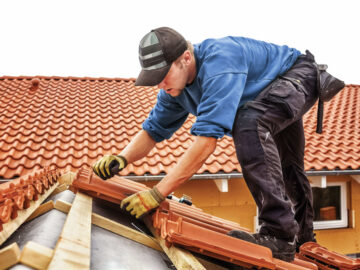Help Your Home—and Wallet—Stand Up to High Winds

Wind mitigation (also known as opening protection) is your home’s best defense against high-speed storms and hurricane damage in Florida. By helping your home stand up to high winds, wind mitigation also gives you a chance to reduce your homeowners insurance rates while boosting safety. Let’s walk through what it means, why it matters, and how to get started.
Wind mitigation refers to construction features that reduce damage from high winds, especially hurricanes. Wind mitigation evaluates key building features that make your home stronger in high winds, like:
Learn more: Florida Office of Insurance Regulation Wind Mitigation Resources
Why is this worth your time? Homes with verified wind‑resistant features may qualify for insurance premium discounts—often reducing wind‑storm coverage by 10 % to 40 % (sometimes even more).
A licensed inspector fills out Florida’s Uniform Mitigation Verification Form (OIR‑B1‑1802), documenting your home’s eligible features. Most inspections are valid for up to 5 years. Send the form to your agent to unlock the discount.
Once you know where your home stands, consider these upgrades:
Investing in opening protection can lead to significant cost savings in several ways:
Many people think wind-proofing their home is just for hurricane season preparation, but Florida’s tornadoes and summer storms can pack gale-force winds any time of year. By investing in wind mitigation—especially protecting your home’s openings—you can help your home stand up to high winds while gaining real financial benefits.
From lower repair costs and reduced insurance premiums to improved property value and energy efficiency, these upgrades deliver peace of mind and payoffs that last long after storm season. Preparing now means you’re ready for whatever the forecast brings.
Related post: Strengthen Your Home and Save Money on Insurance
 Florida Lifestyle
Florida Lifestyle
Explore 7 Florida homeowners insurance products tailored to your needs—from condos to rentals to high-value homes. Get a quote today.
 Home Improvement
Home Improvement
Discover how Security First Insurance’s First Choice Repair Network® helps Florida homeowners with trusted contractors for repairs, renovations, and faster claims.
 Homeowners Insurance Florida
Homeowners Insurance Florida
Learn how to choose your homeowners insurance deductible. Compare flat vs. percentage options, see real examples, and decide what’s best.